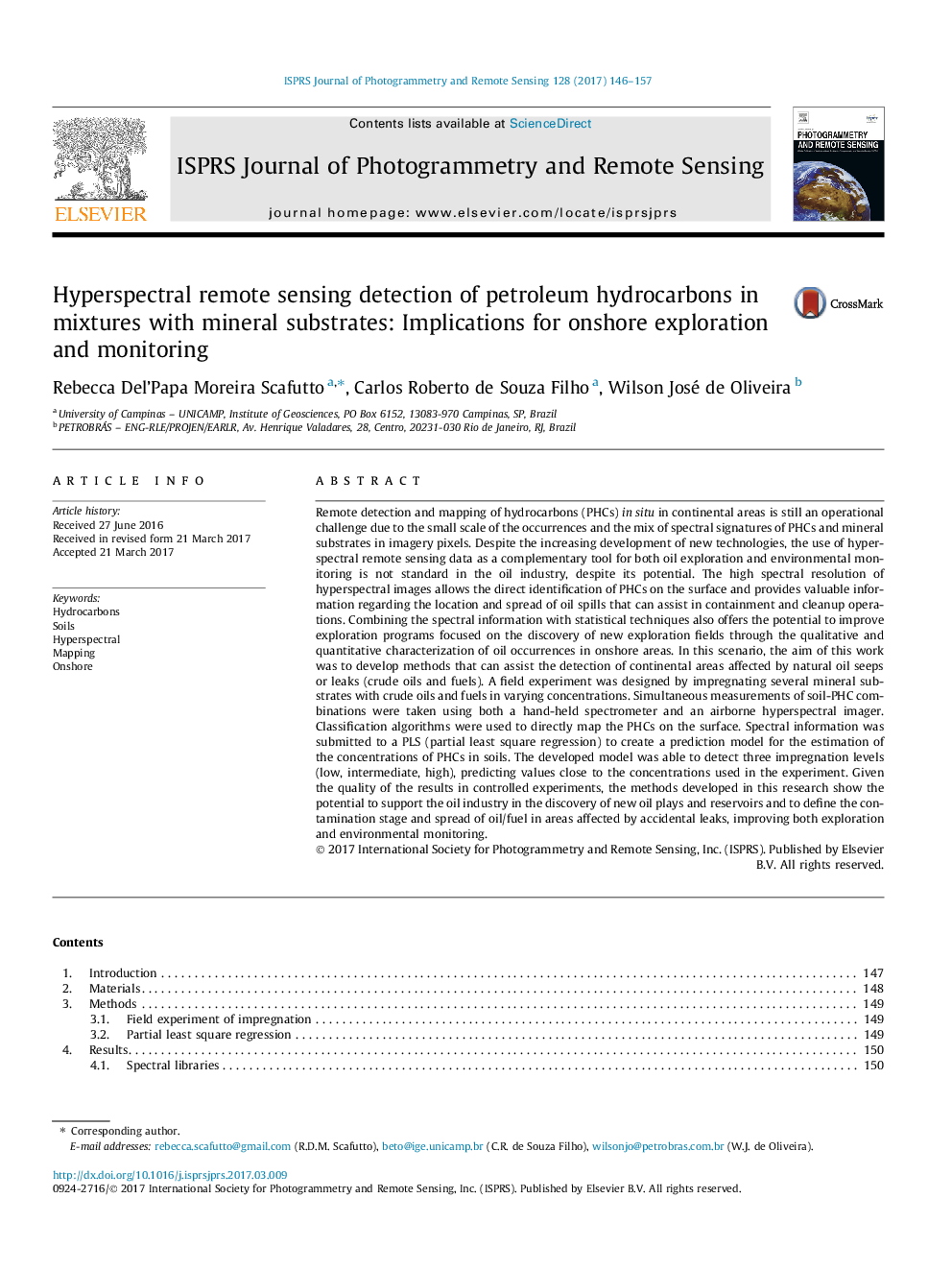| کد مقاله | کد نشریه | سال انتشار | مقاله انگلیسی | نسخه تمام متن |
|---|---|---|---|---|
| 4972856 | 1451246 | 2017 | 12 صفحه PDF | دانلود رایگان |
عنوان انگلیسی مقاله ISI
Hyperspectral remote sensing detection of petroleum hydrocarbons in mixtures with mineral substrates: Implications for onshore exploration and monitoring
ترجمه فارسی عنوان
تشخیص سنجی از راه دور در هیدروکربن های نفتی در مخلوط با زیربناهای معدنی: اثرات برای کاوش و نظارت بر ساحل
دانلود مقاله + سفارش ترجمه
دانلود مقاله ISI انگلیسی
رایگان برای ایرانیان
کلمات کلیدی
هیدروکربن ها، خاک، بیش از حد، نقشه برداری، در ساحل،
موضوعات مرتبط
مهندسی و علوم پایه
مهندسی کامپیوتر
سیستم های اطلاعاتی
چکیده انگلیسی
Remote detection and mapping of hydrocarbons (PHCs) in situ in continental areas is still an operational challenge due to the small scale of the occurrences and the mix of spectral signatures of PHCs and mineral substrates in imagery pixels. Despite the increasing development of new technologies, the use of hyperspectral remote sensing data as a complementary tool for both oil exploration and environmental monitoring is not standard in the oil industry, despite its potential. The high spectral resolution of hyperspectral images allows the direct identification of PHCs on the surface and provides valuable information regarding the location and spread of oil spills that can assist in containment and cleanup operations. Combining the spectral information with statistical techniques also offers the potential to improve exploration programs focused on the discovery of new exploration fields through the qualitative and quantitative characterization of oil occurrences in onshore areas. In this scenario, the aim of this work was to develop methods that can assist the detection of continental areas affected by natural oil seeps or leaks (crude oils and fuels). A field experiment was designed by impregnating several mineral substrates with crude oils and fuels in varying concentrations. Simultaneous measurements of soil-PHC combinations were taken using both a hand-held spectrometer and an airborne hyperspectral imager. Classification algorithms were used to directly map the PHCs on the surface. Spectral information was submitted to a PLS (partial least square regression) to create a prediction model for the estimation of the concentrations of PHCs in soils. The developed model was able to detect three impregnation levels (low, intermediate, high), predicting values close to the concentrations used in the experiment. Given the quality of the results in controlled experiments, the methods developed in this research show the potential to support the oil industry in the discovery of new oil plays and reservoirs and to define the contamination stage and spread of oil/fuel in areas affected by accidental leaks, improving both exploration and environmental monitoring.
ناشر
Database: Elsevier - ScienceDirect (ساینس دایرکت)
Journal: ISPRS Journal of Photogrammetry and Remote Sensing - Volume 128, June 2017, Pages 146-157
Journal: ISPRS Journal of Photogrammetry and Remote Sensing - Volume 128, June 2017, Pages 146-157
نویسندگان
Rebecca Del'Papa Moreira Scafutto, Carlos Roberto de Souza Filho, Wilson José de Oliveira,
